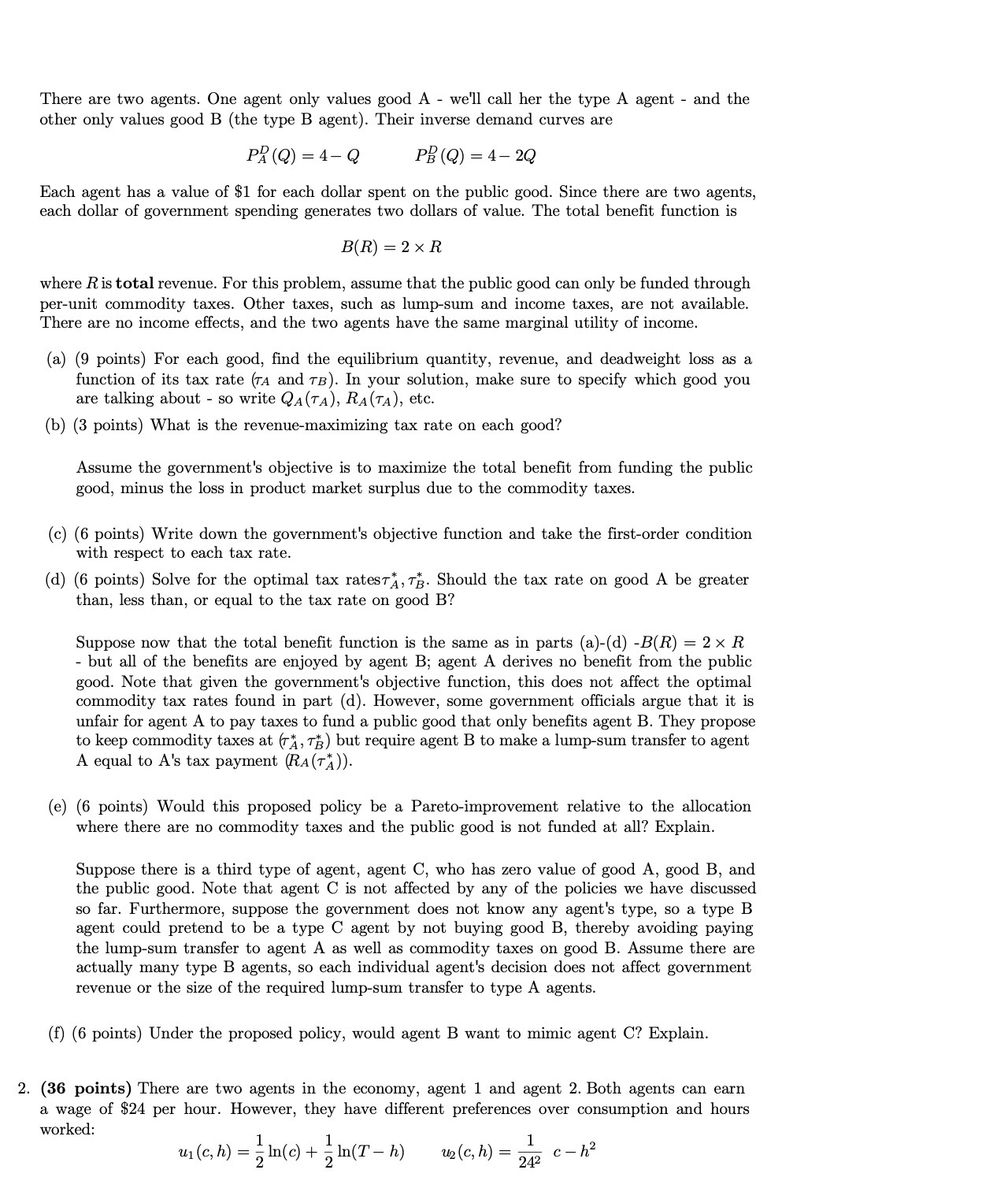There are two agents. One agent only values good A - we'll call her the type A agent - and the other only values good B (the type B agent). Their inverse demand curves are PE(Q)=4Q P(Q)=42Q Each agent has a value of $1 for each dollar spent on the public good. Since there are two agents, each dollar of government spending generates two dollars of value. The total benet function is B(R)=2xR where R is total revenue. For this problem, assume that the public good can only be funded through per-unit commodity taxes. Other taxes, such as lump-sum and income taxes, are not available. There are no income effects, and the two agents have the same marginal utility of income. (a) (9 points) For each good, find the equilibrium quantity, revenue, and deadweight loss as a function of its tax rate (TA and TB). In your solution, make sure to specify which good you are talking about - so write (2,4034), RA(TA), etc. (b) (3 points) What is the revenue-maximizing tax rate on each good? Assume the government's objective is to maximize the total benefit from funding the public good, minus the loss in product market surplus due to the commodity taxes. (c) (6 points) Write down the government's objective function and take the rst-order condition with respect to each tax rate. (d) (6 points) Solve for the optimal tax ratesrjg. Should the tax rate on good A be greater than, less than, or equal to the tax rate on good B? Suppose now that the total benet function is the same as in parts (a)-(d) -B(R) : 2 x R - but all of the benets are enjoyed by agent B; agent A derives no benet from the public good. Note that given the government's objective function, this does not affect the optimal commodity tax rates found in part (d). However, some government ofcials argue that it is unfair for agent A to pay taxes to fund a public good that only benets agent B. They propose to keep commodity taxes at frj, 73;) but require agent B to malce a lump-sum transfer to agent A equal to A's tax payment (RA (12)). (e) (6 points) Would this proposed policy be a Paretoimprovement relative to the allocation where there are no commodity taxes and the public good is not funded at all? Explain. Suppose there is a third type of agent, agent C, who has zero value of good A, good B, and the public good. Note that agent C is not affected by any of the policies we have discussed so far. Furthermore, suppose the government does not know any agent's type, so a type B agent could pretend to be a type C agent by not buying good B, thereby avoiding paying the lump-sum transfer to agent A as well as commodity taxes on good B. Assume there are actually many type B agents, so each individual agent's decision does not affect government revenue or the size of the required lump-sum transfer to type A agents. (0 (5 points) Under the proposed policy, would agent B want to mimic agent C? Explain. 2. (36 points) There are two agents in the economy, agent 1 and agent 2. Both agents can earn a wage of $24 per hour. However, they have different preferences over consumption and hours worked: 1 1 1 _ 7 7 i = 7 m 2 u1(c, h) 2 ln(c) + 2 ln(T h) 1120:, h.) 242 c h







